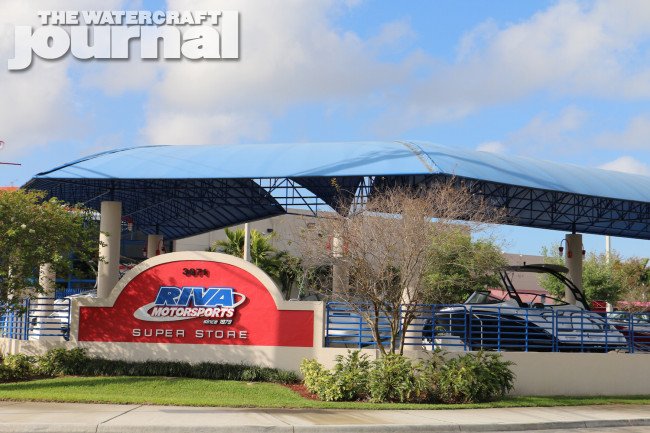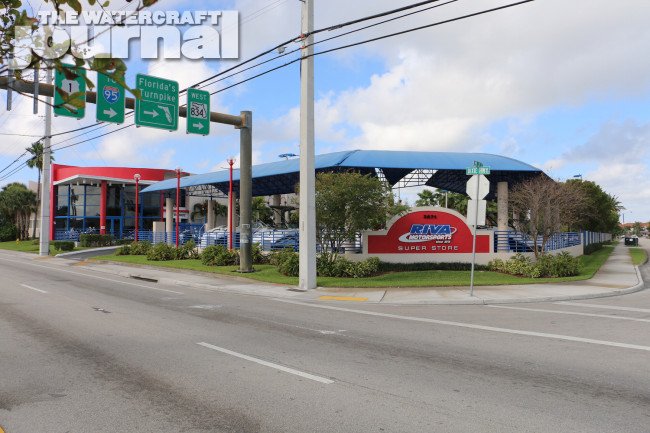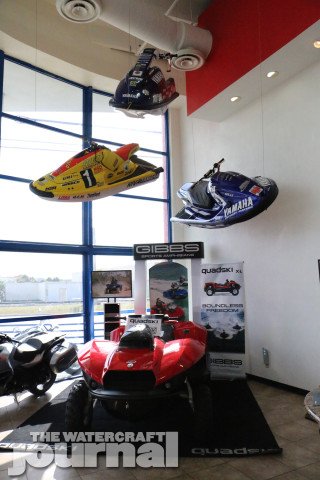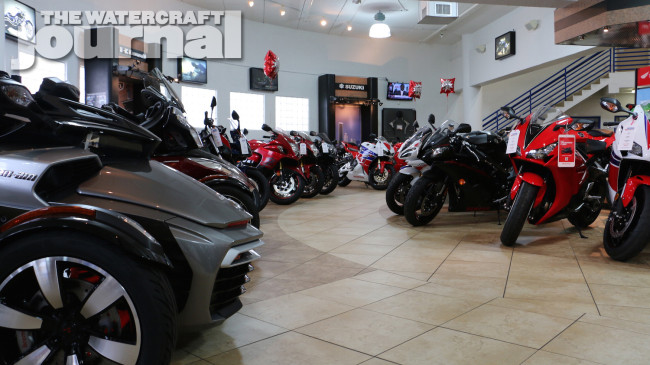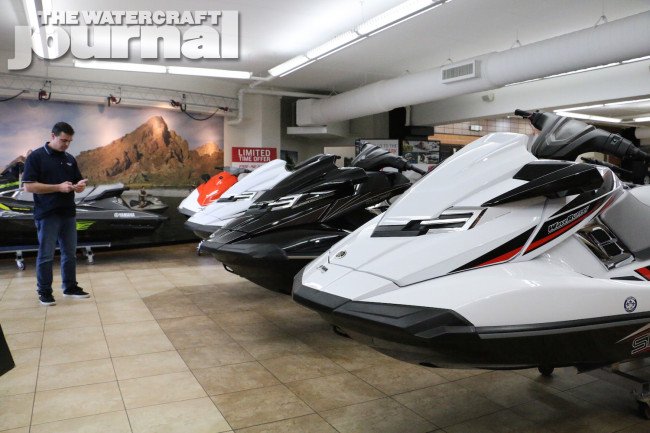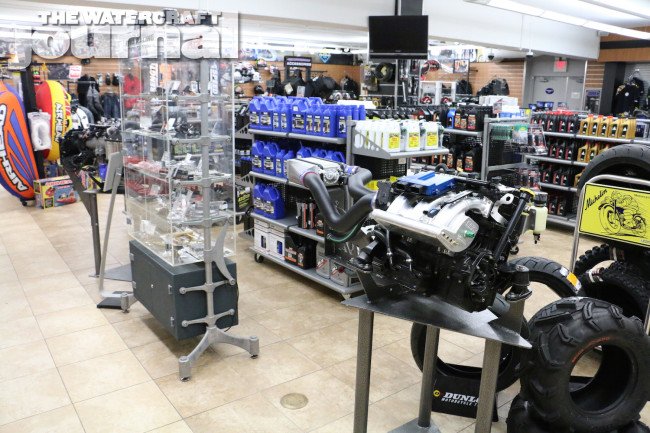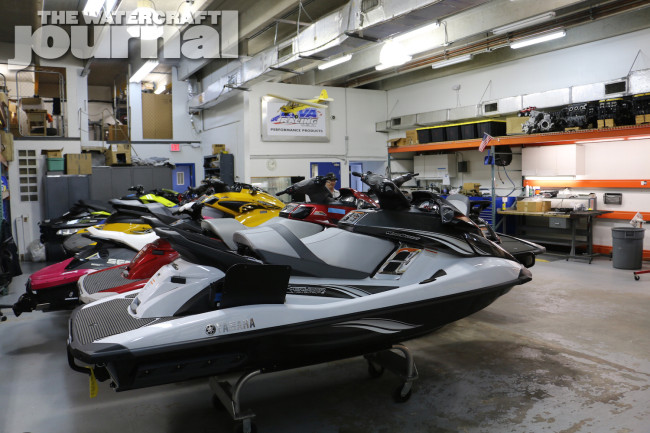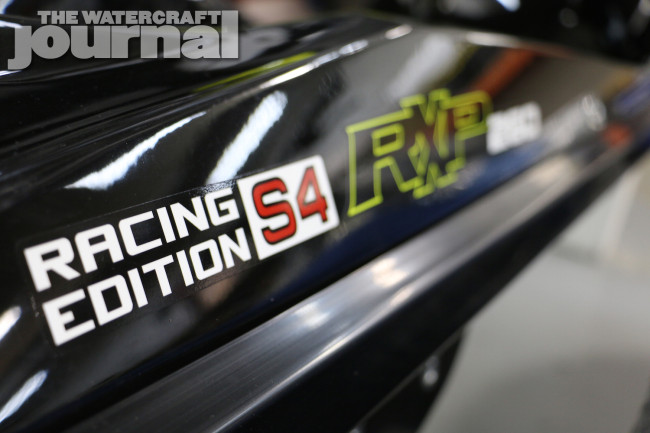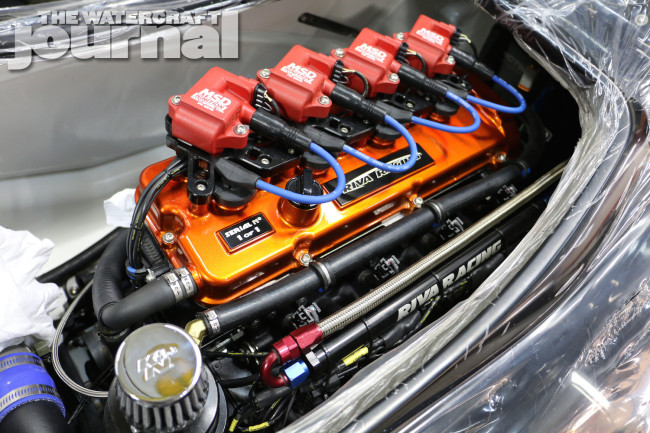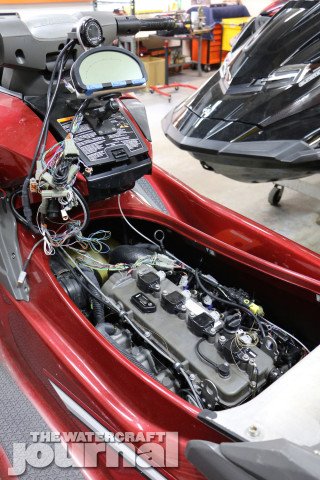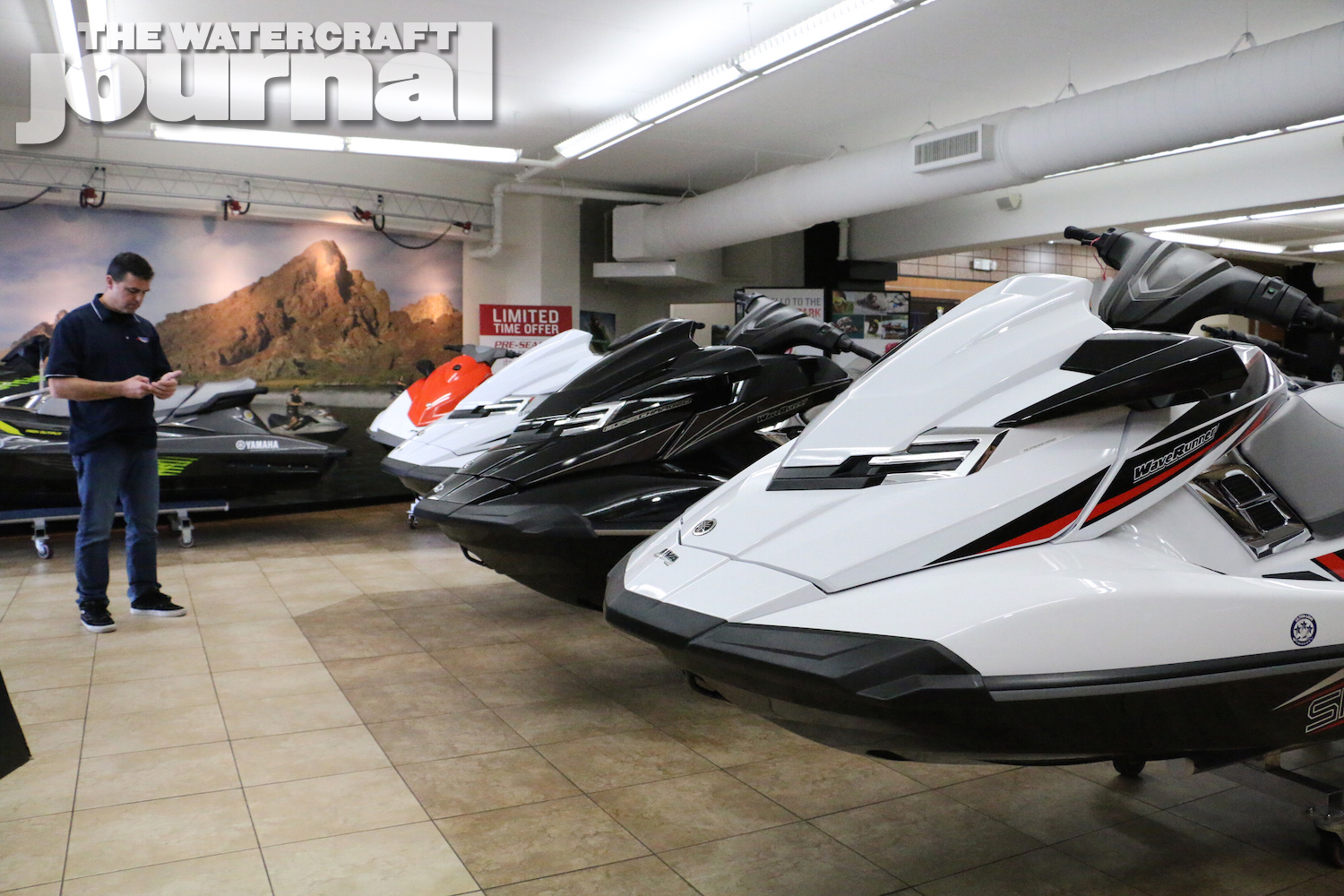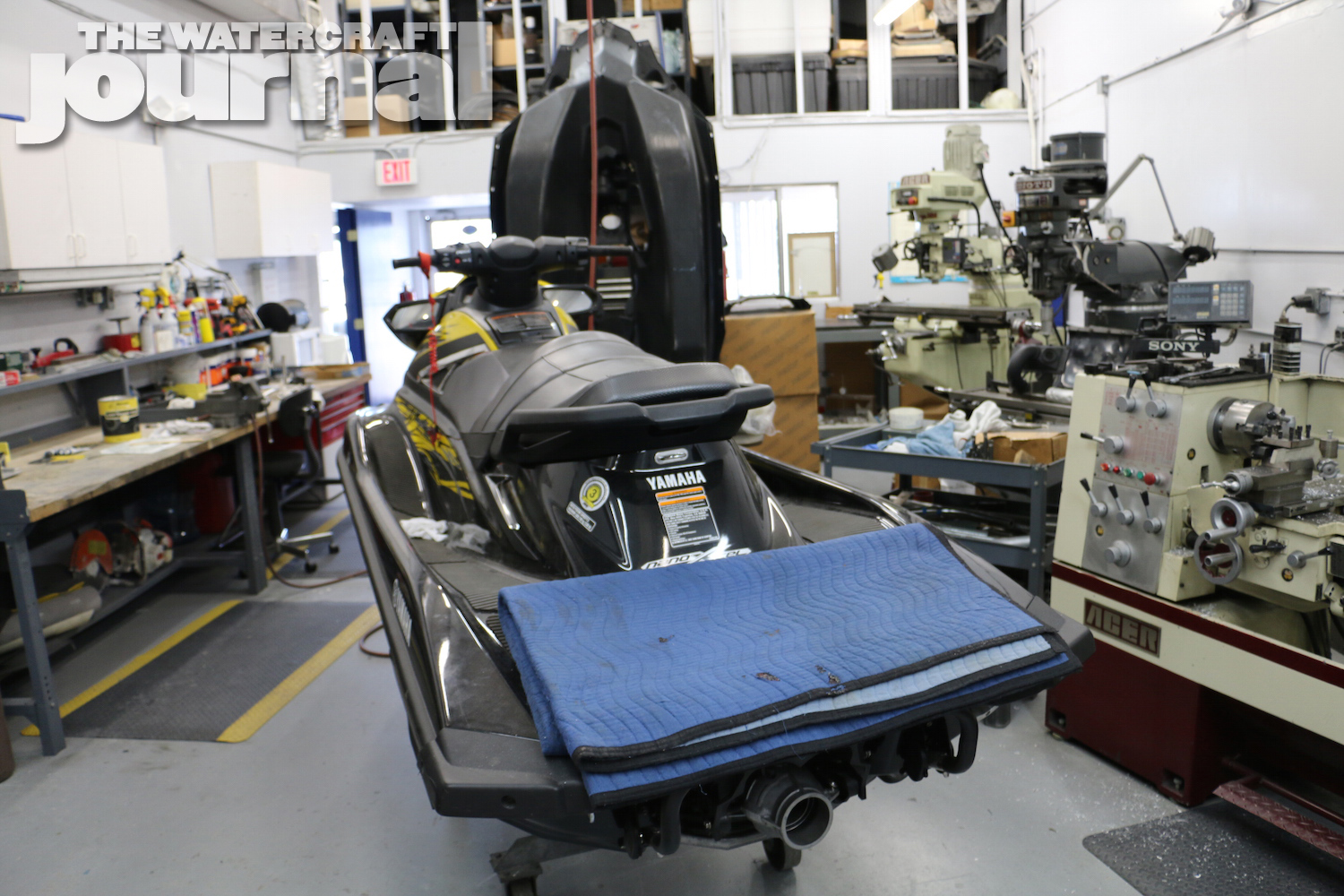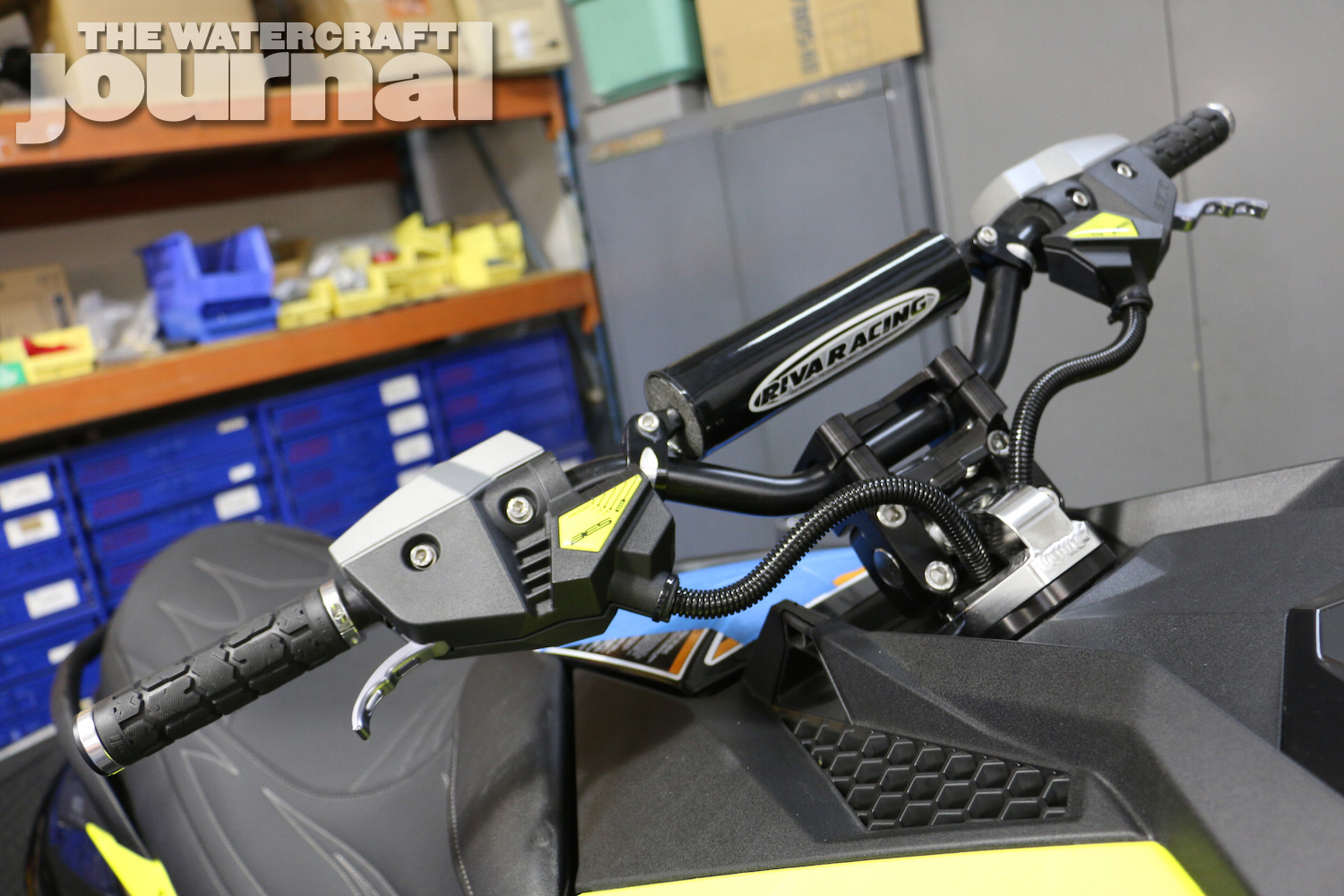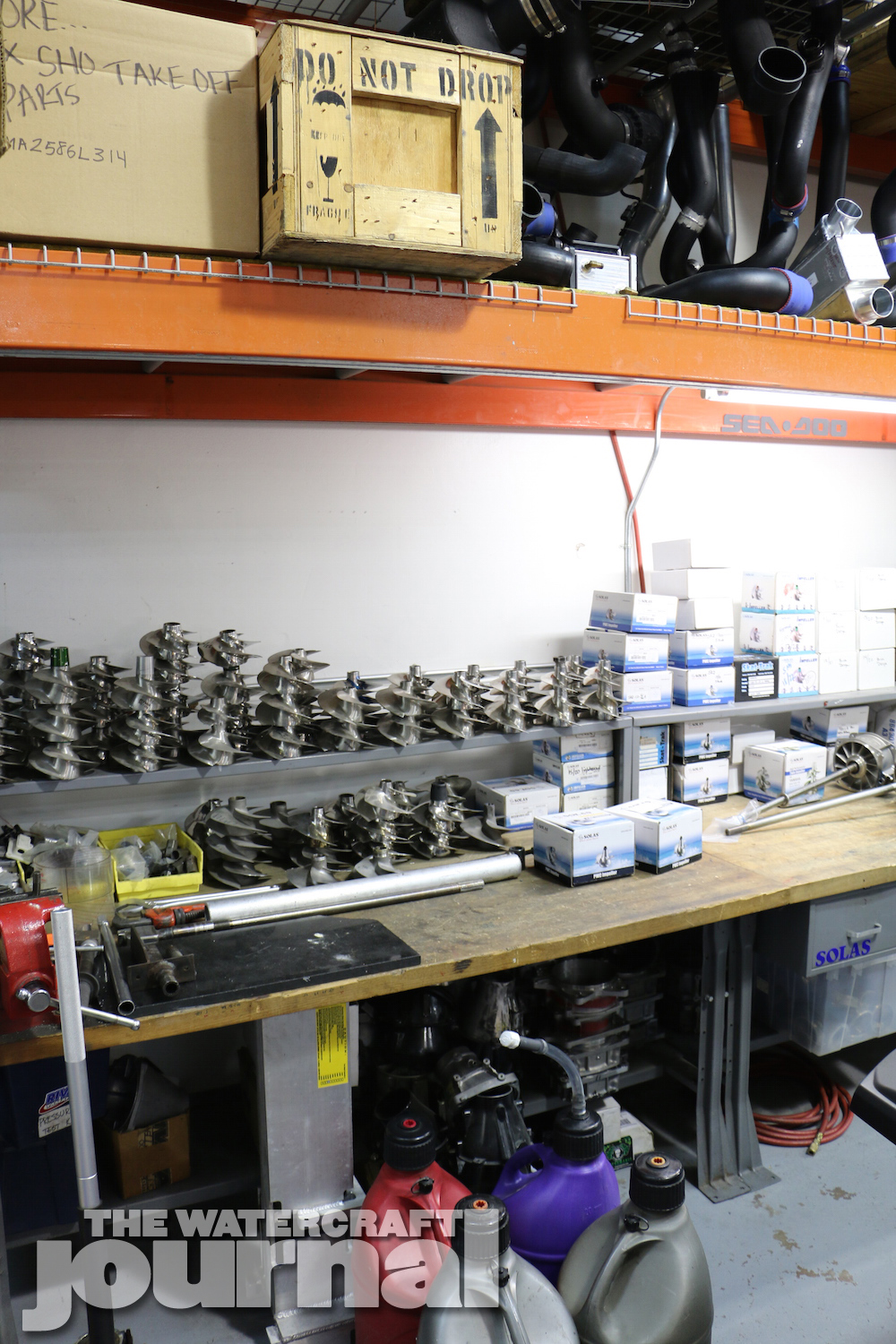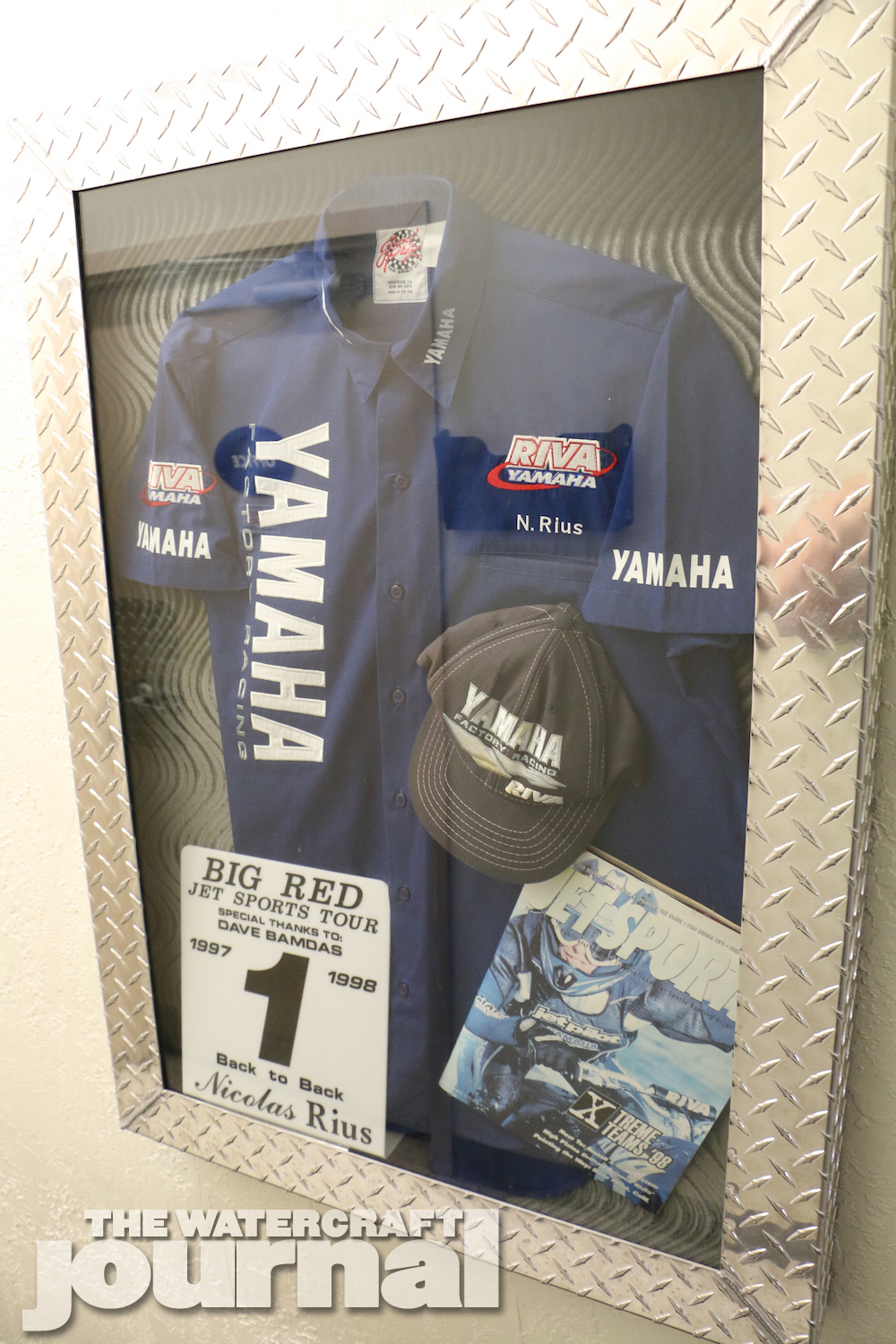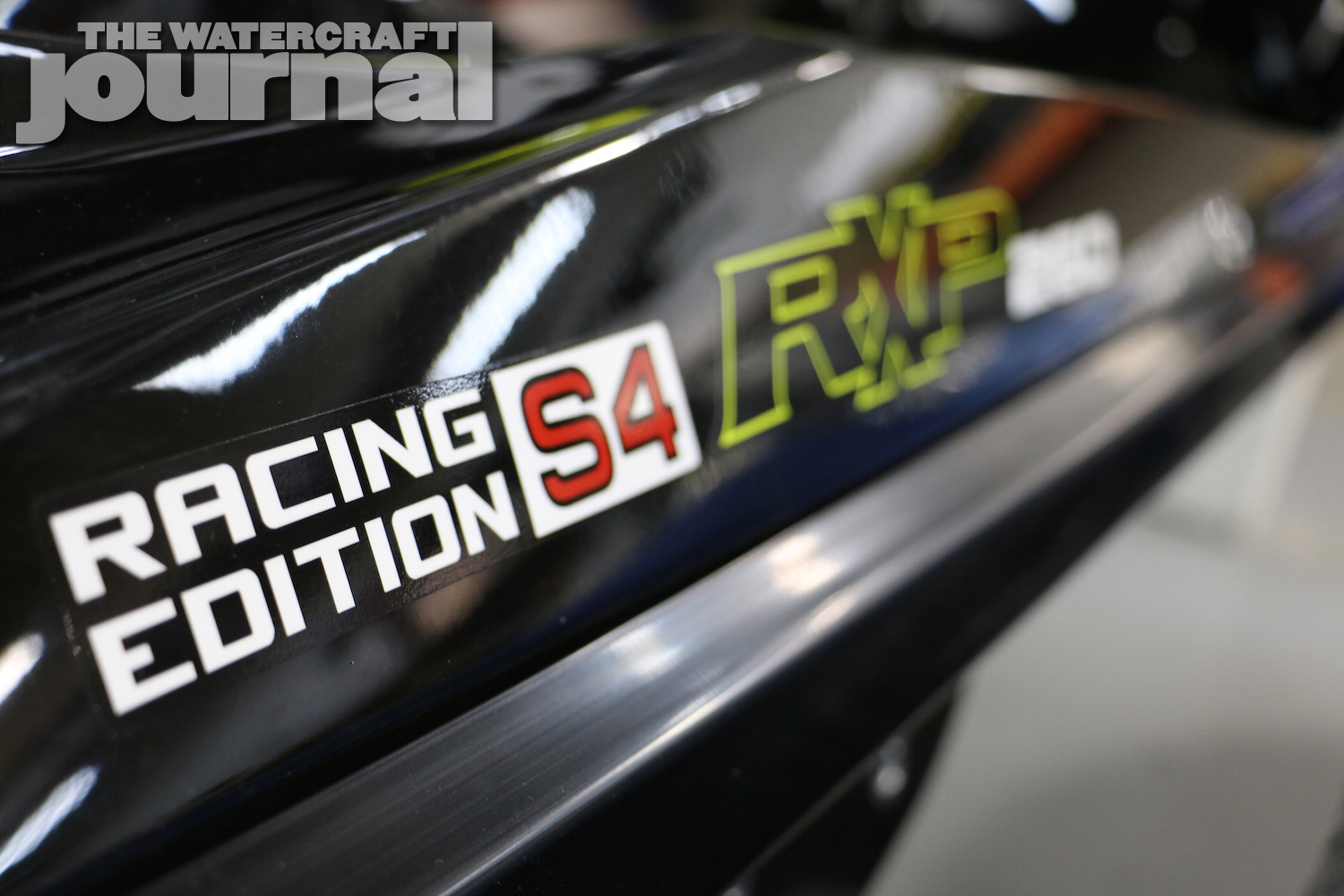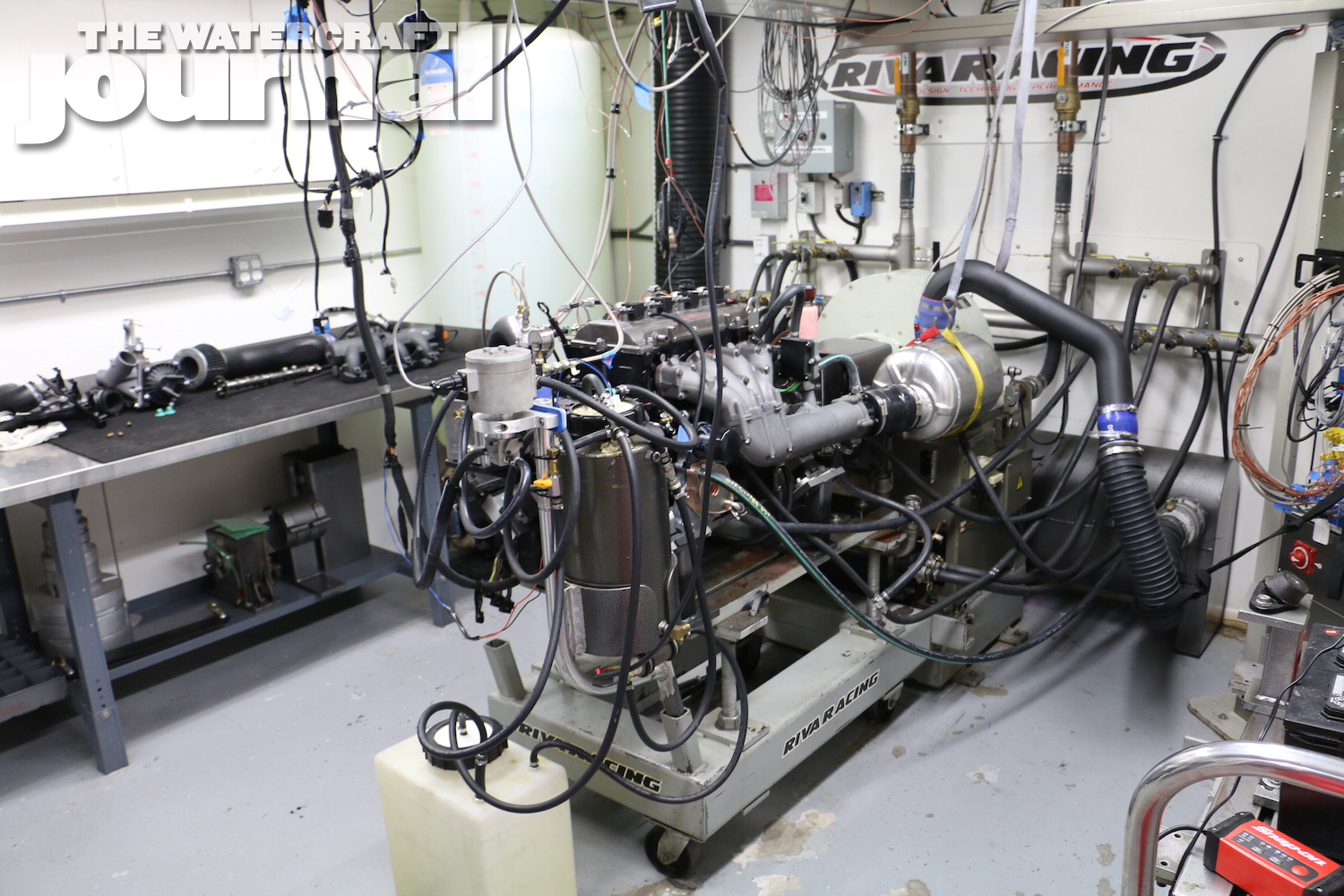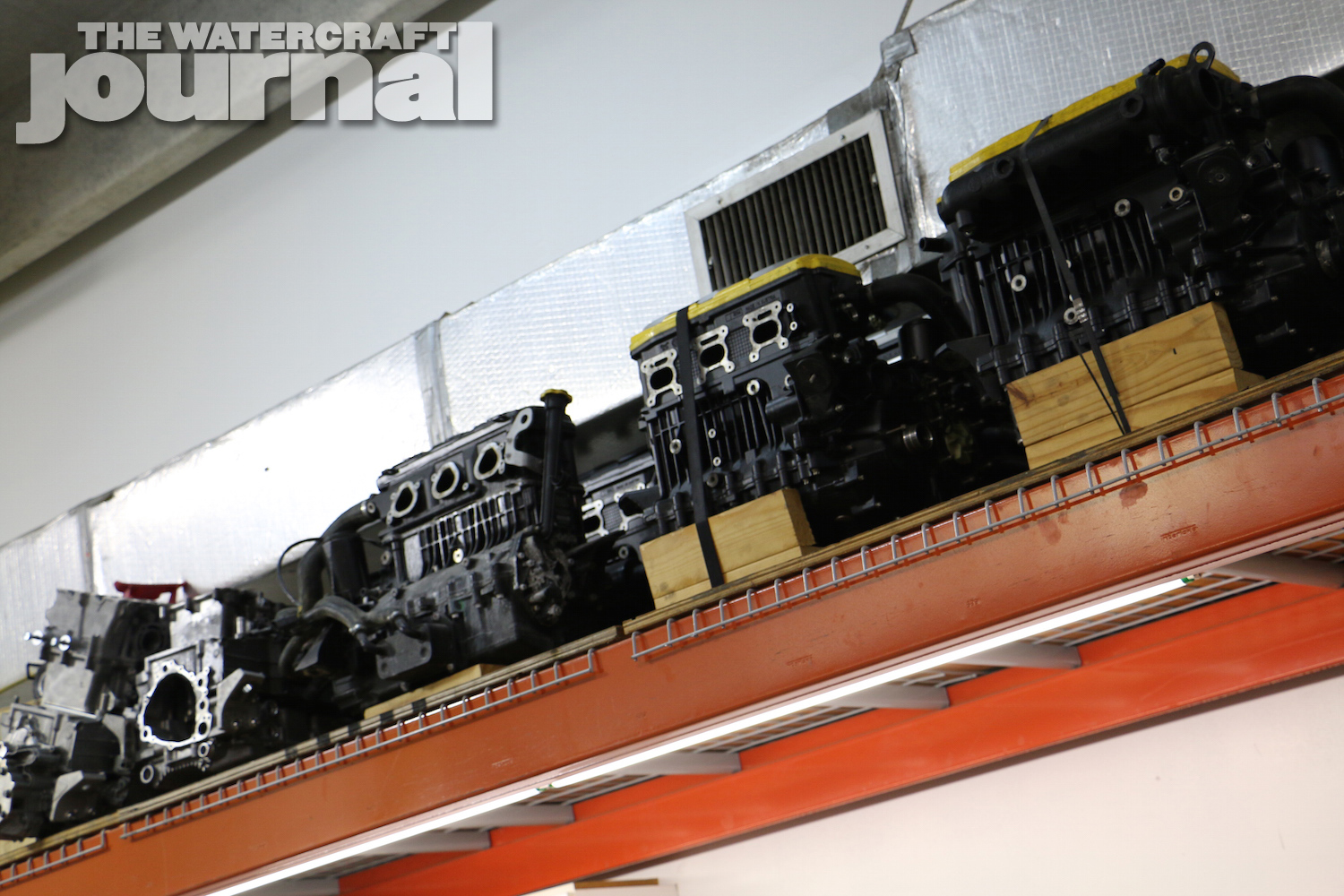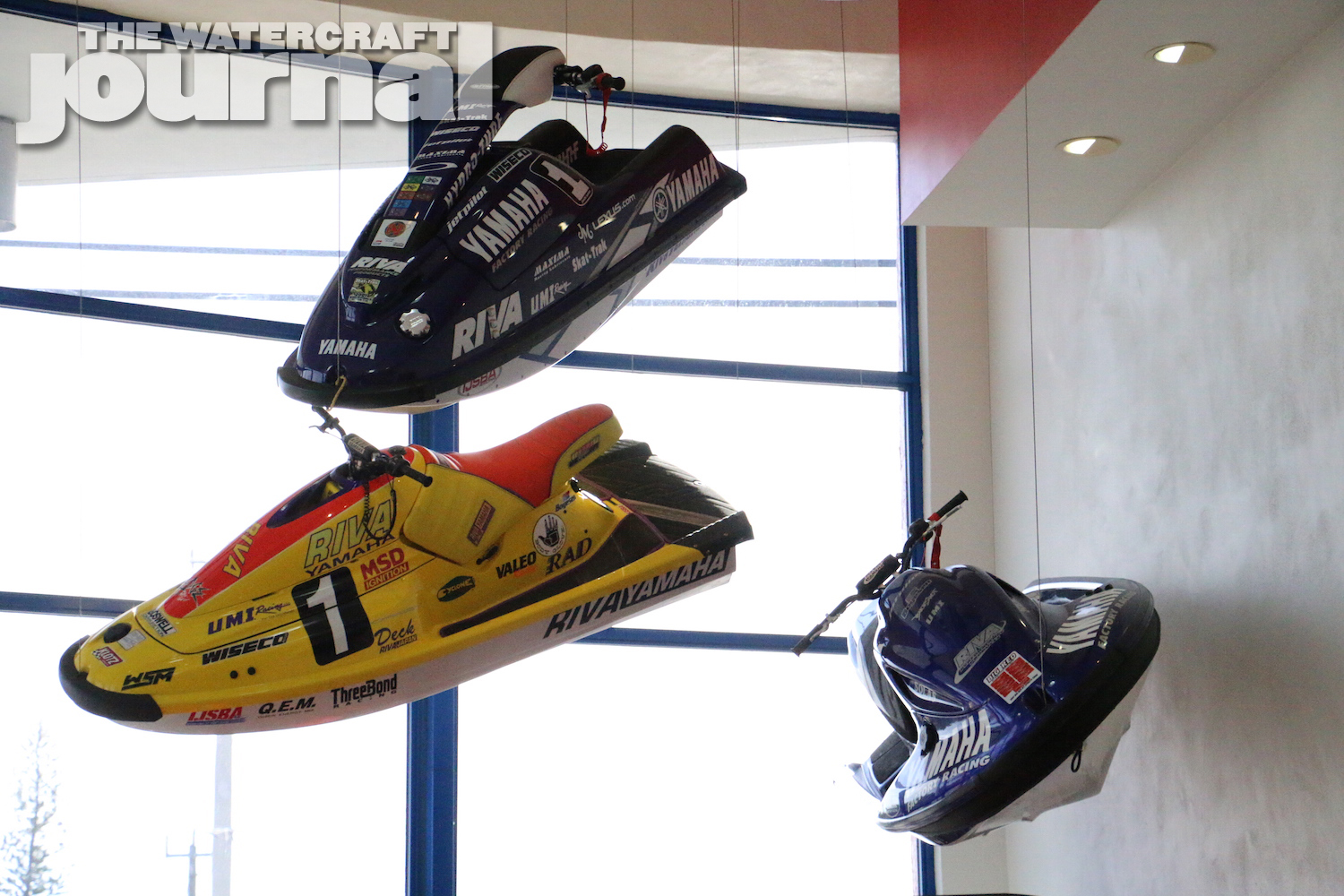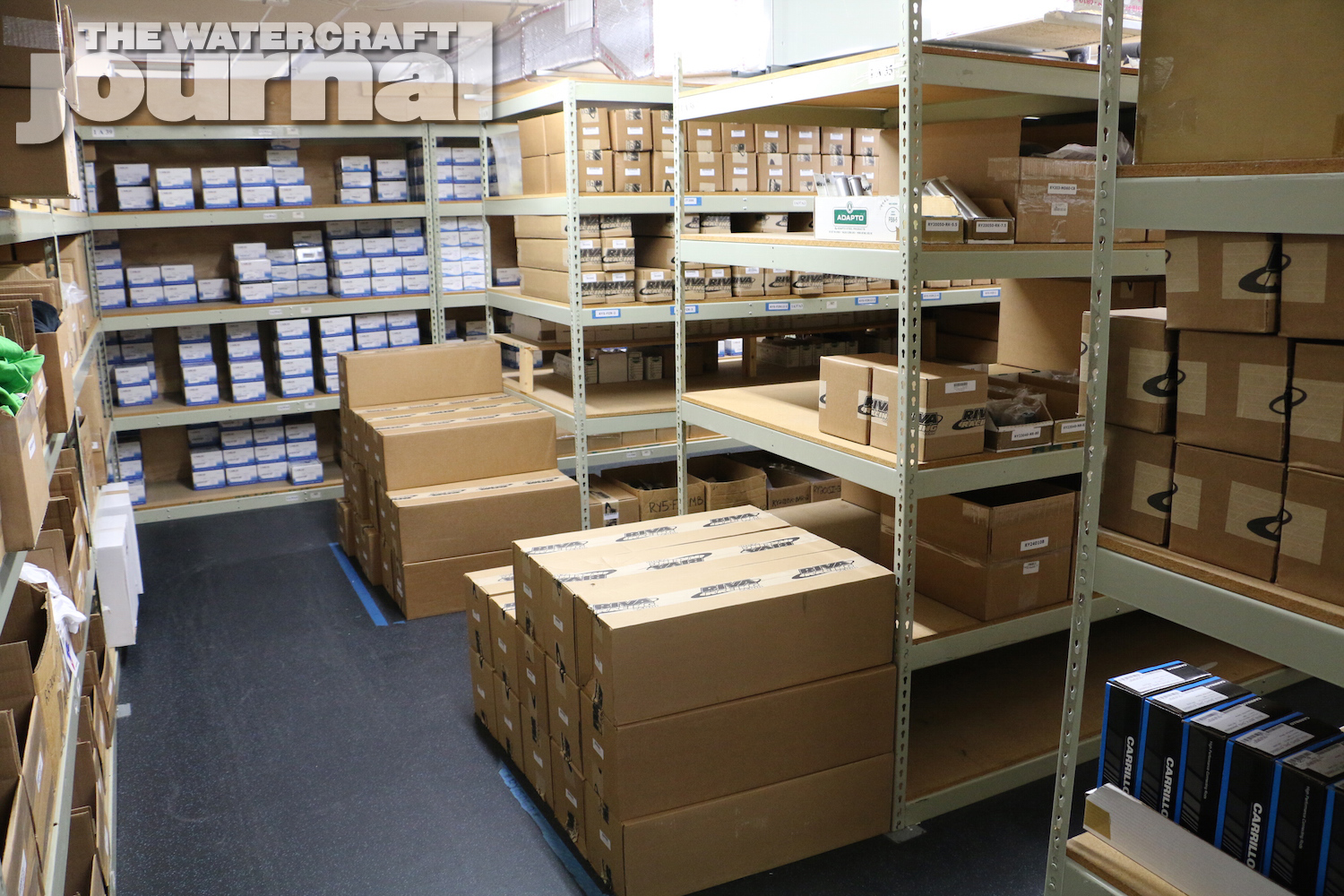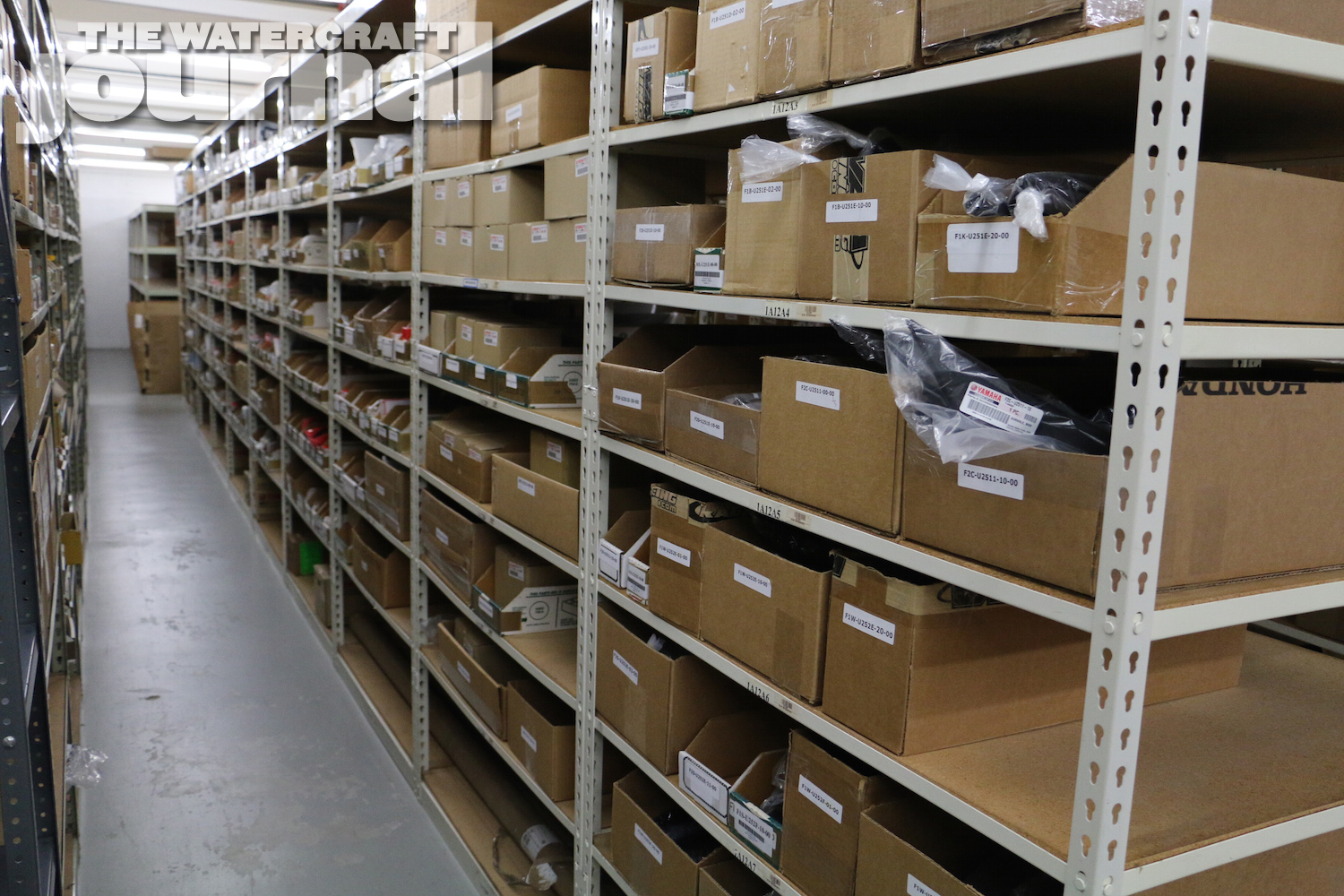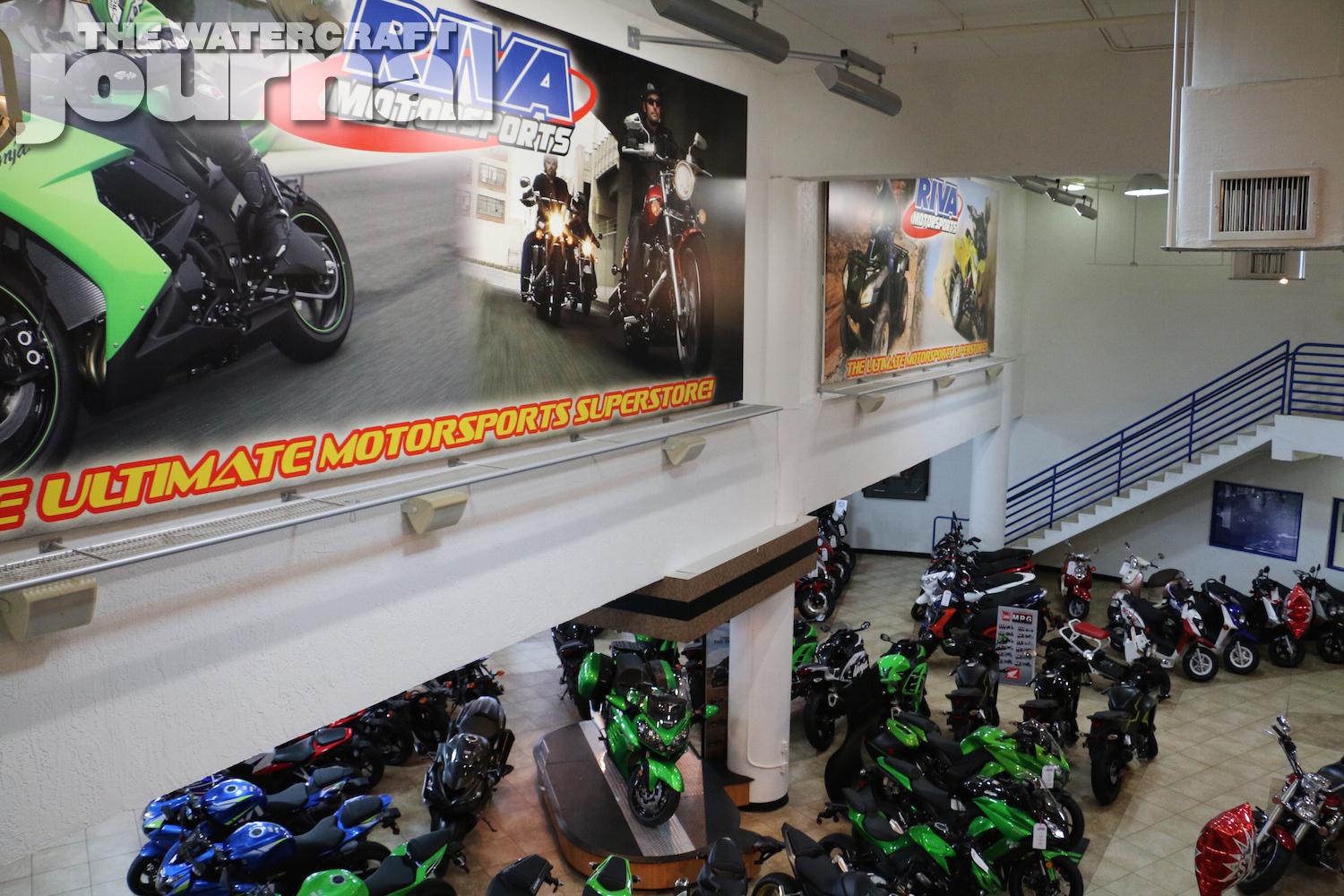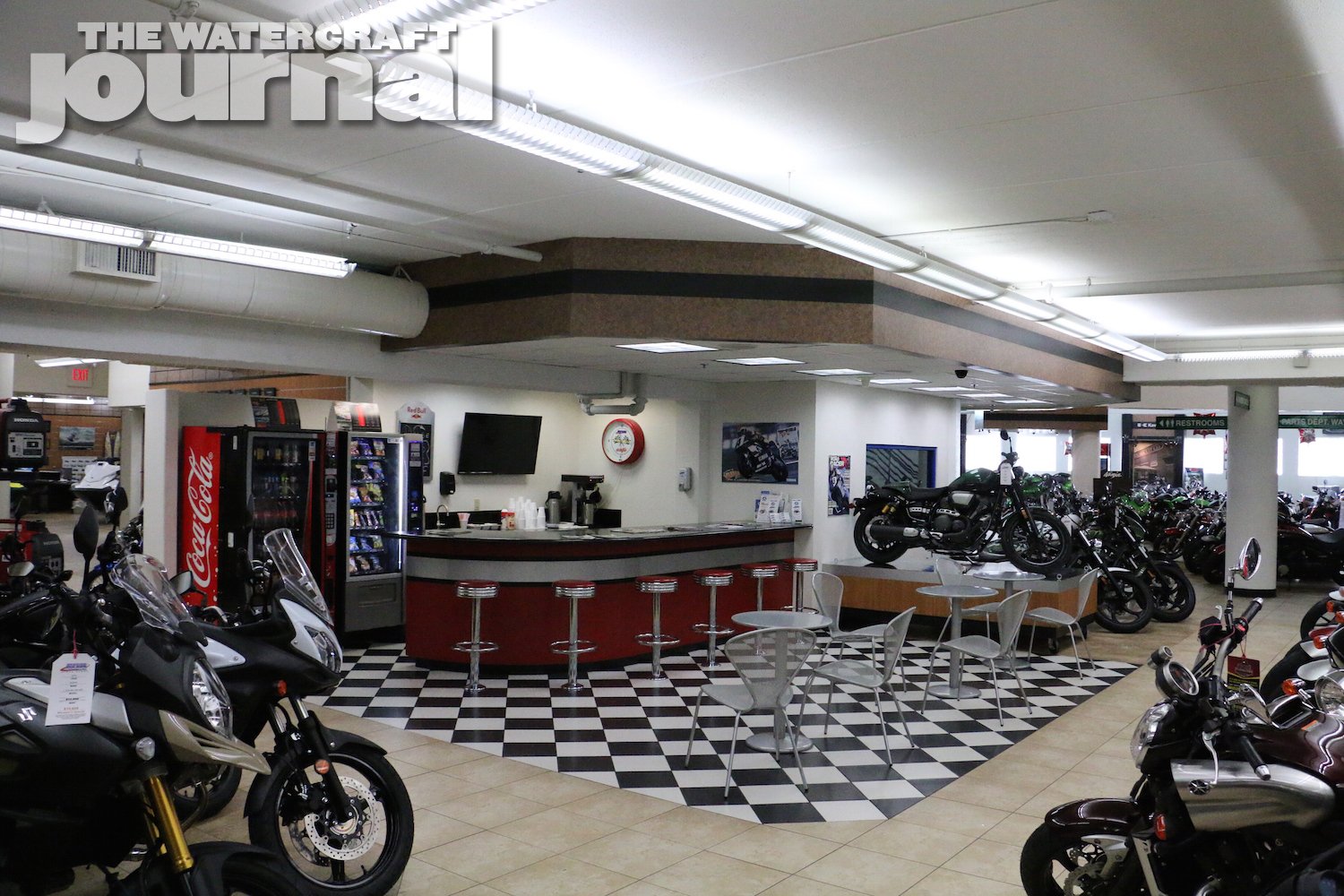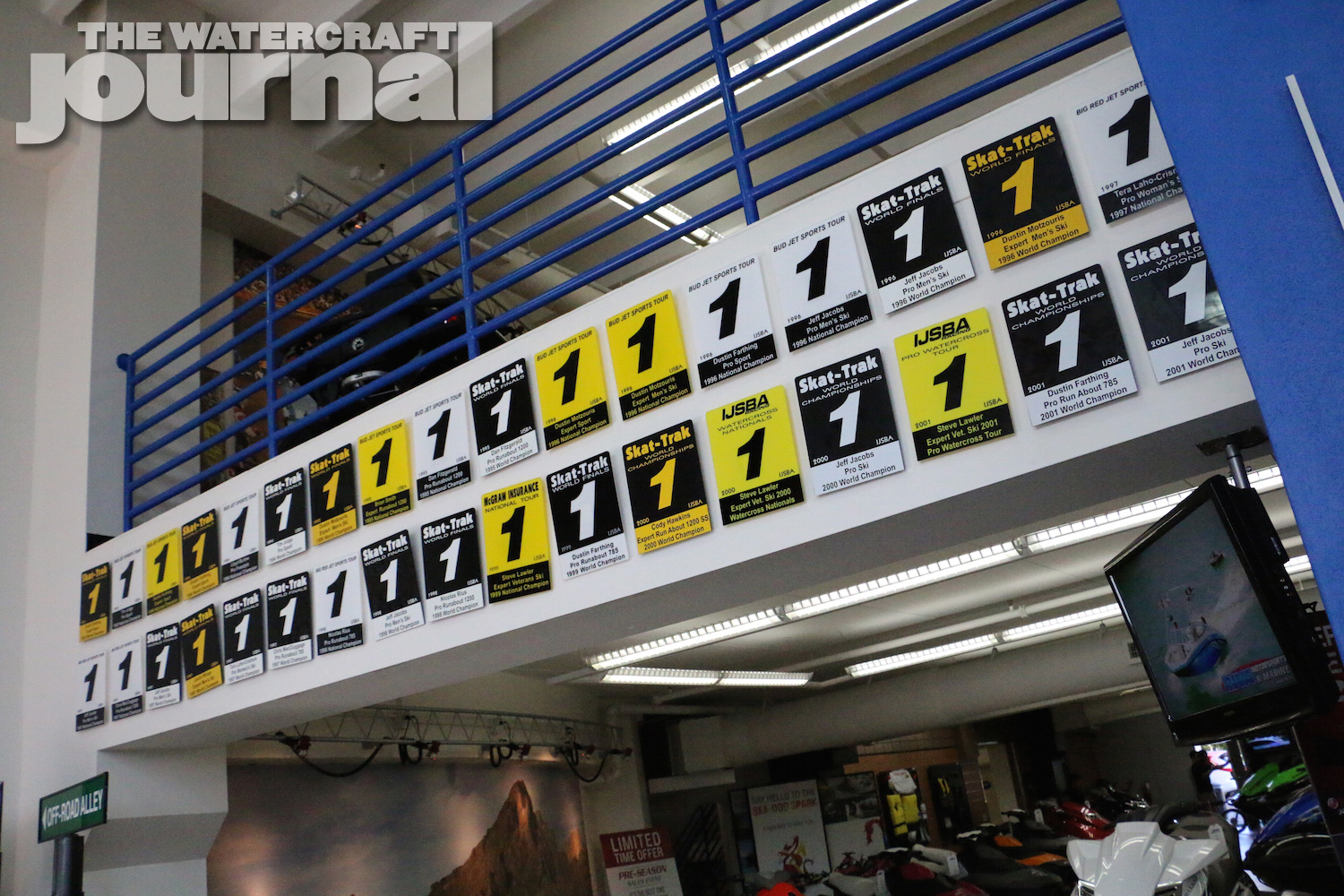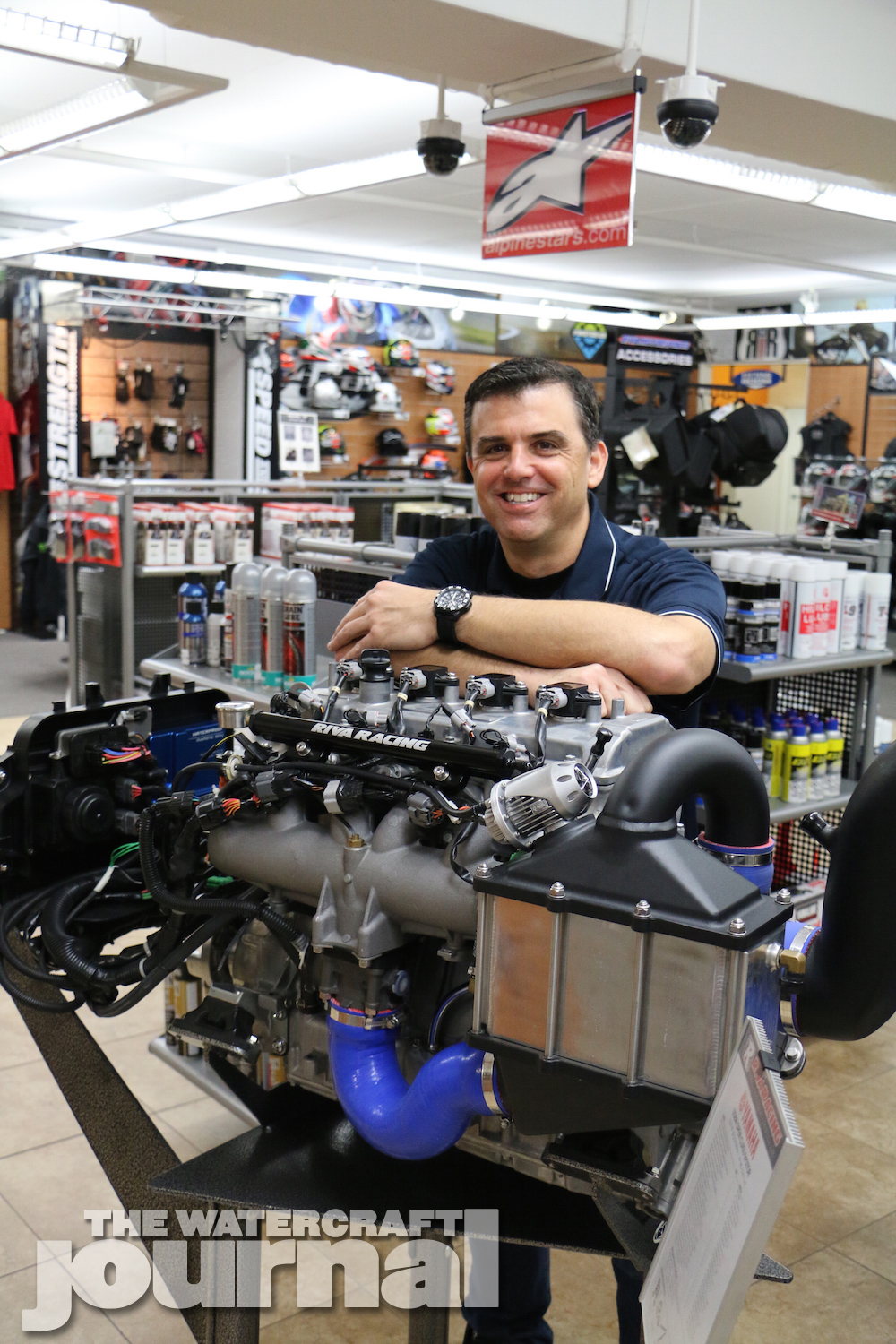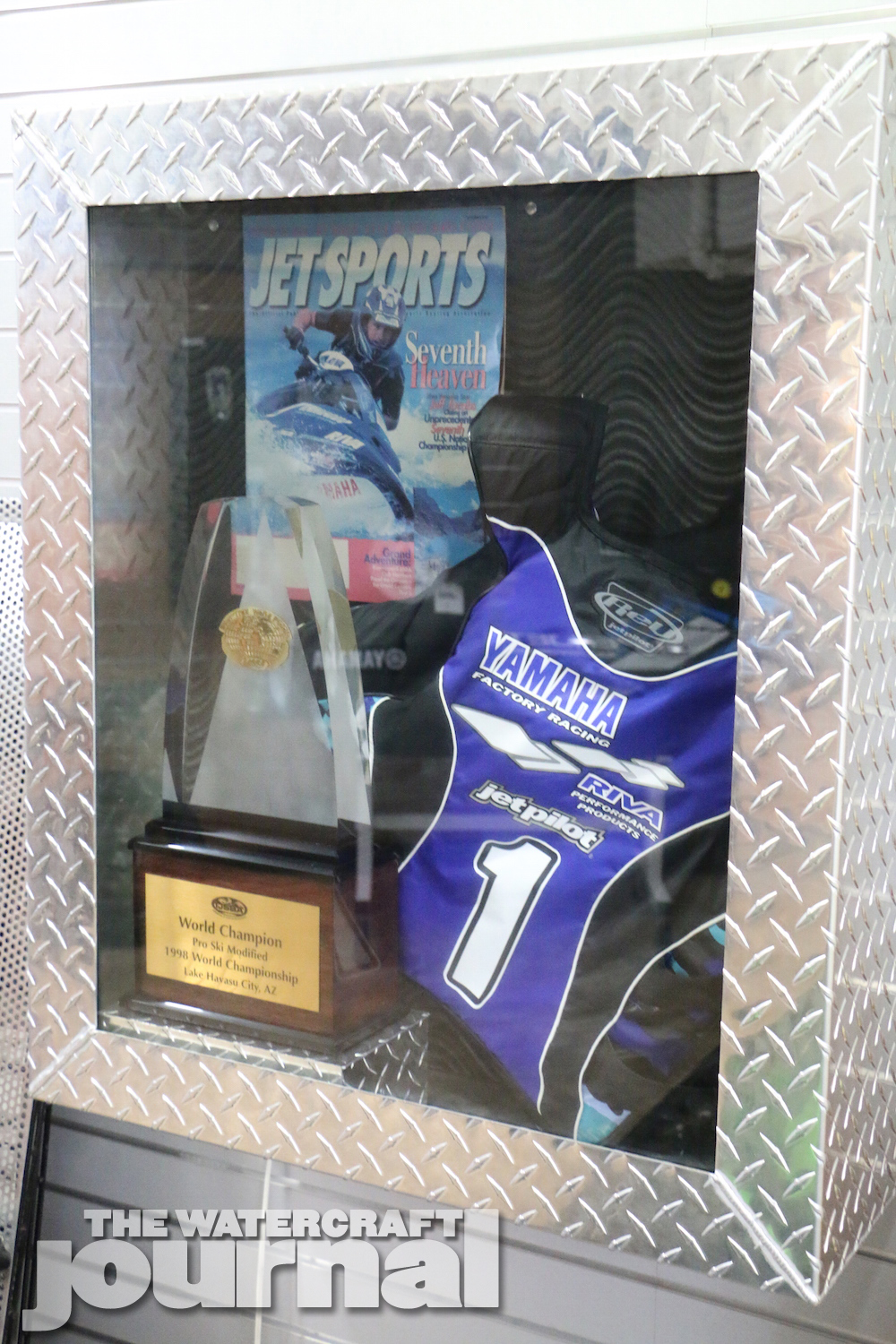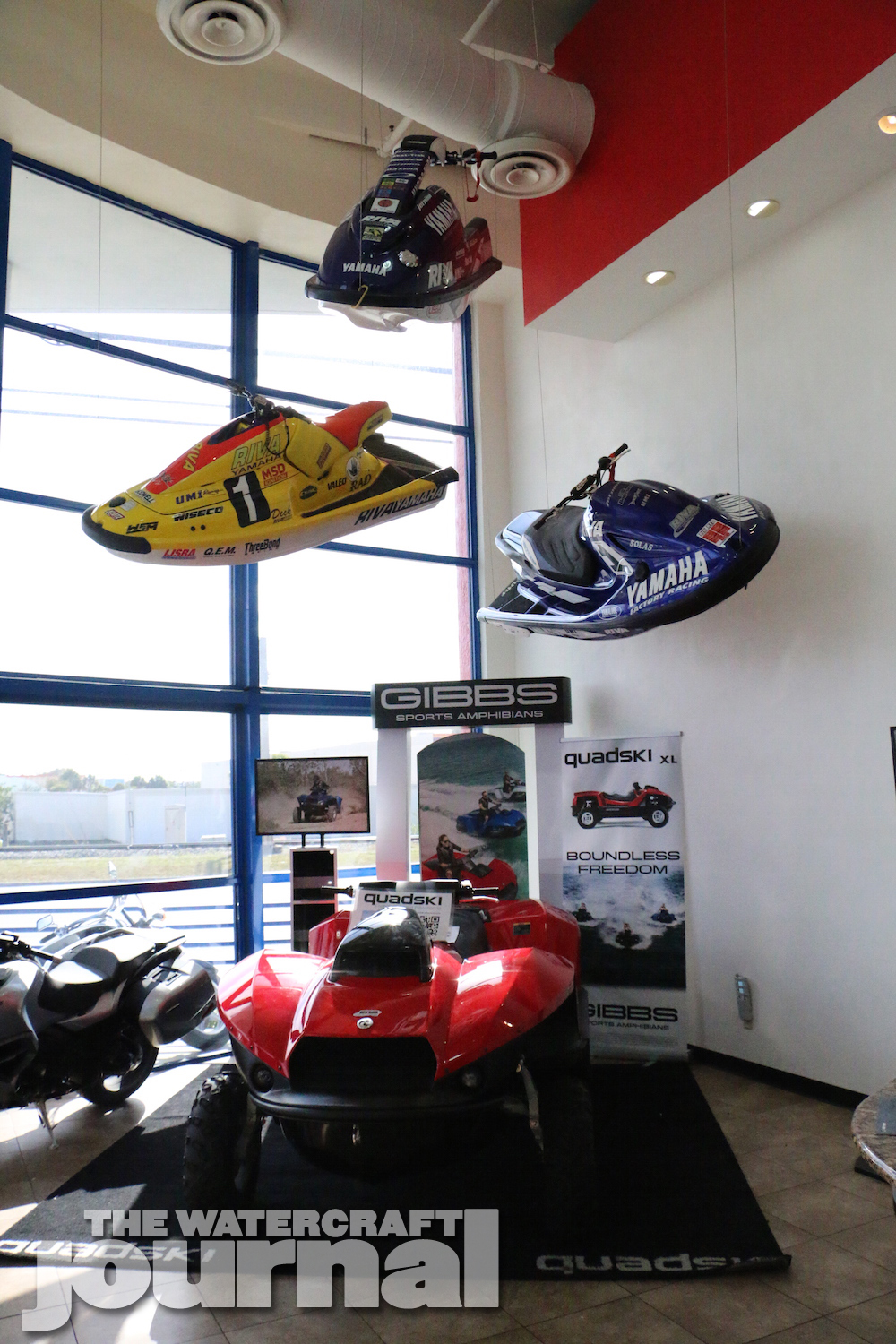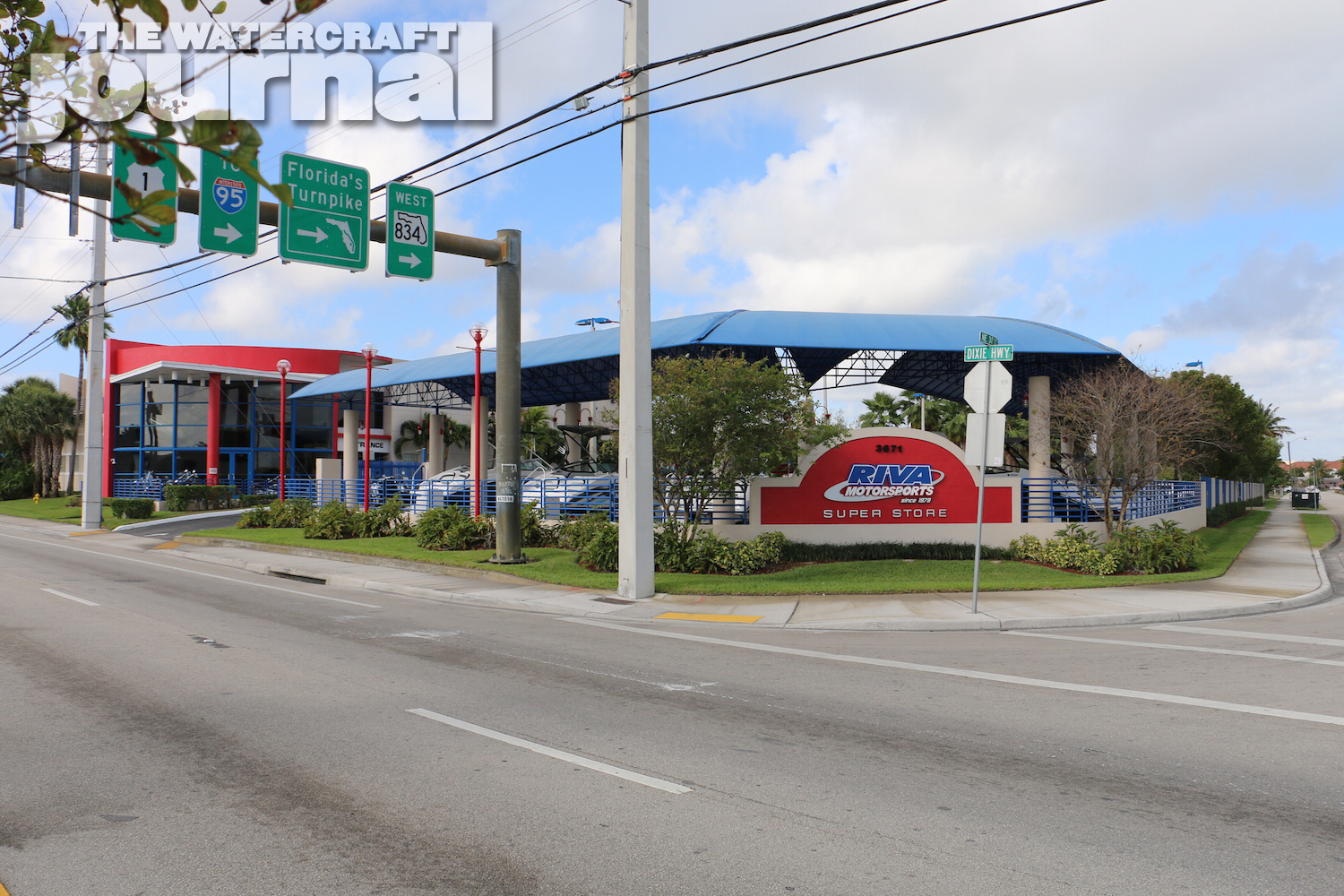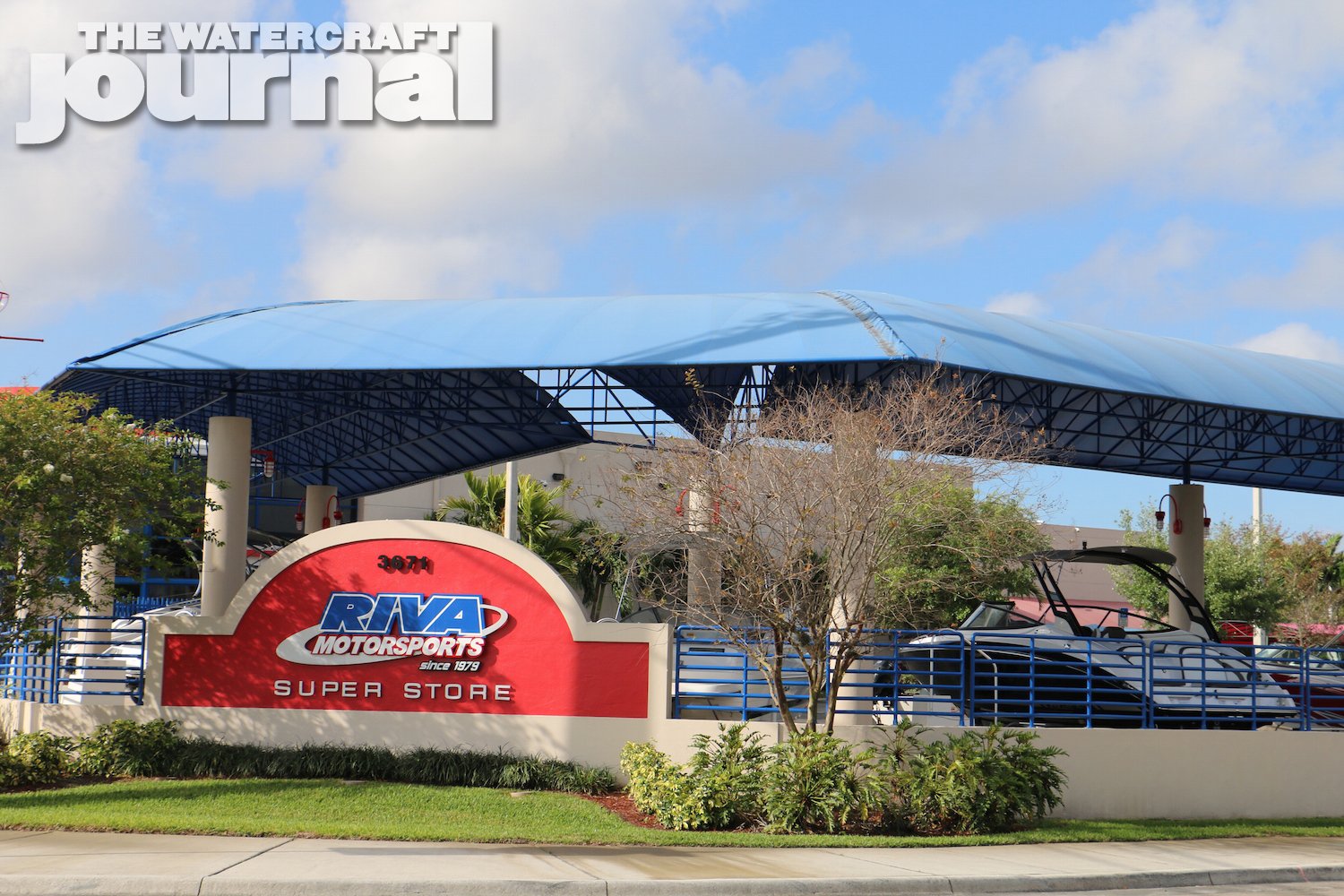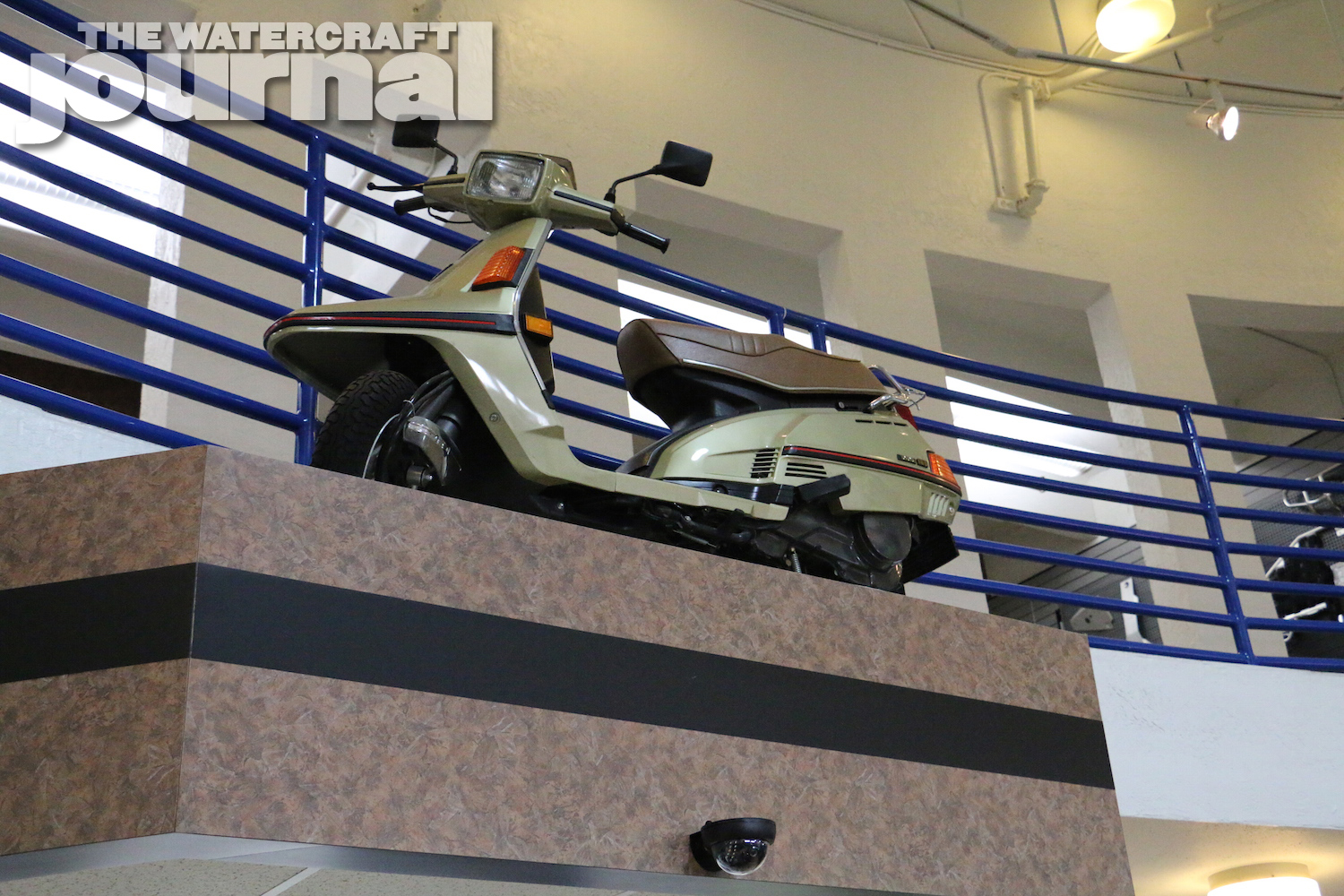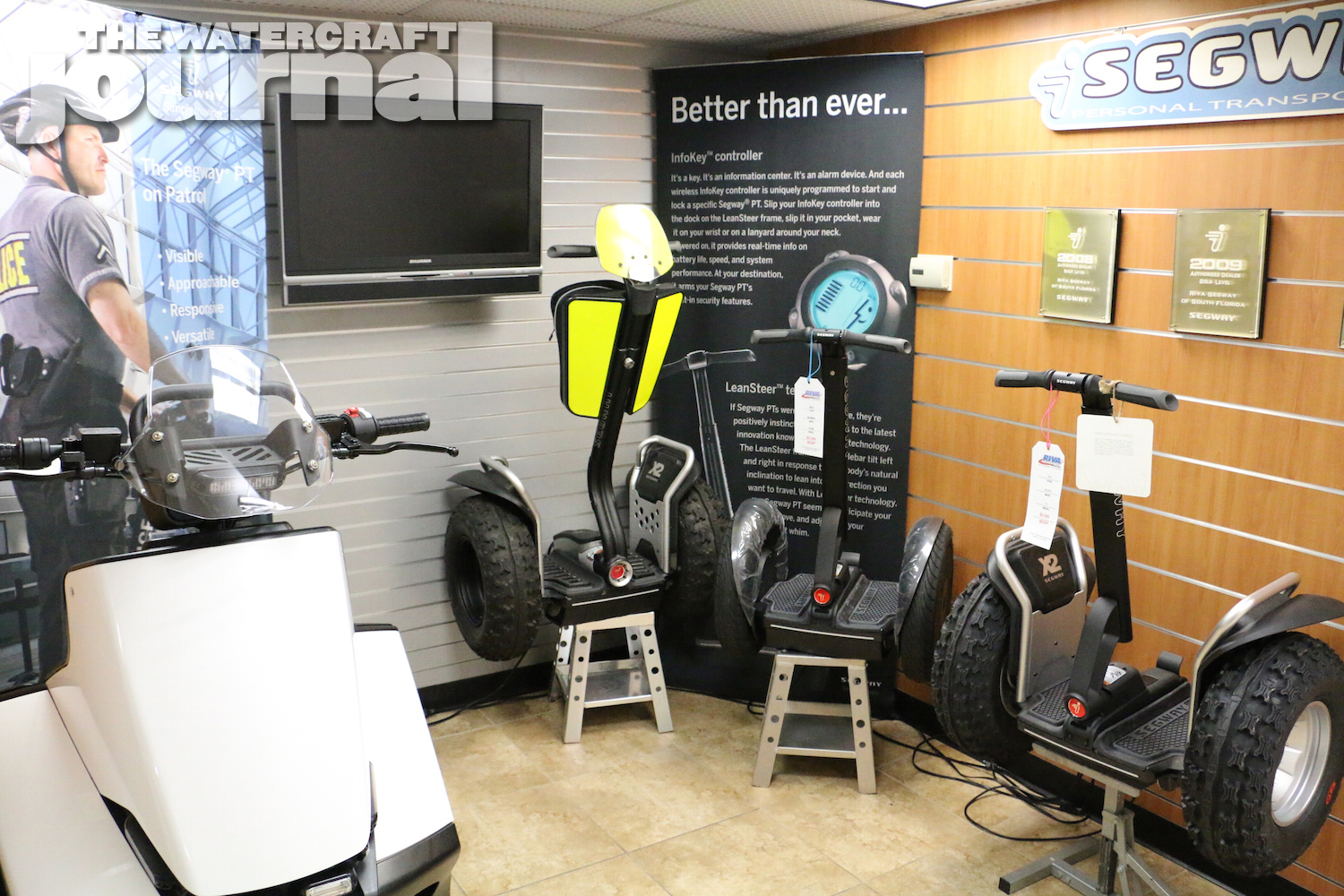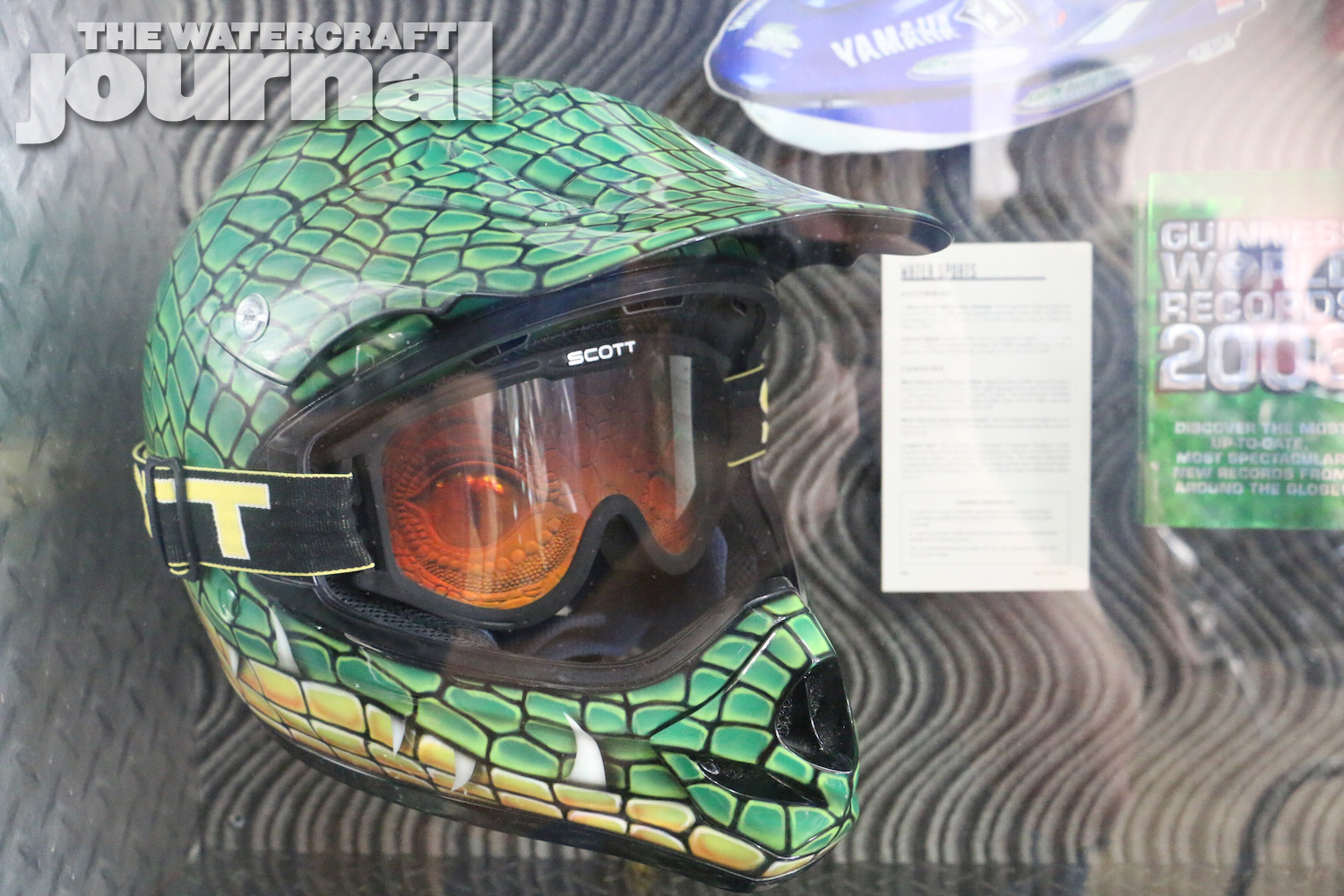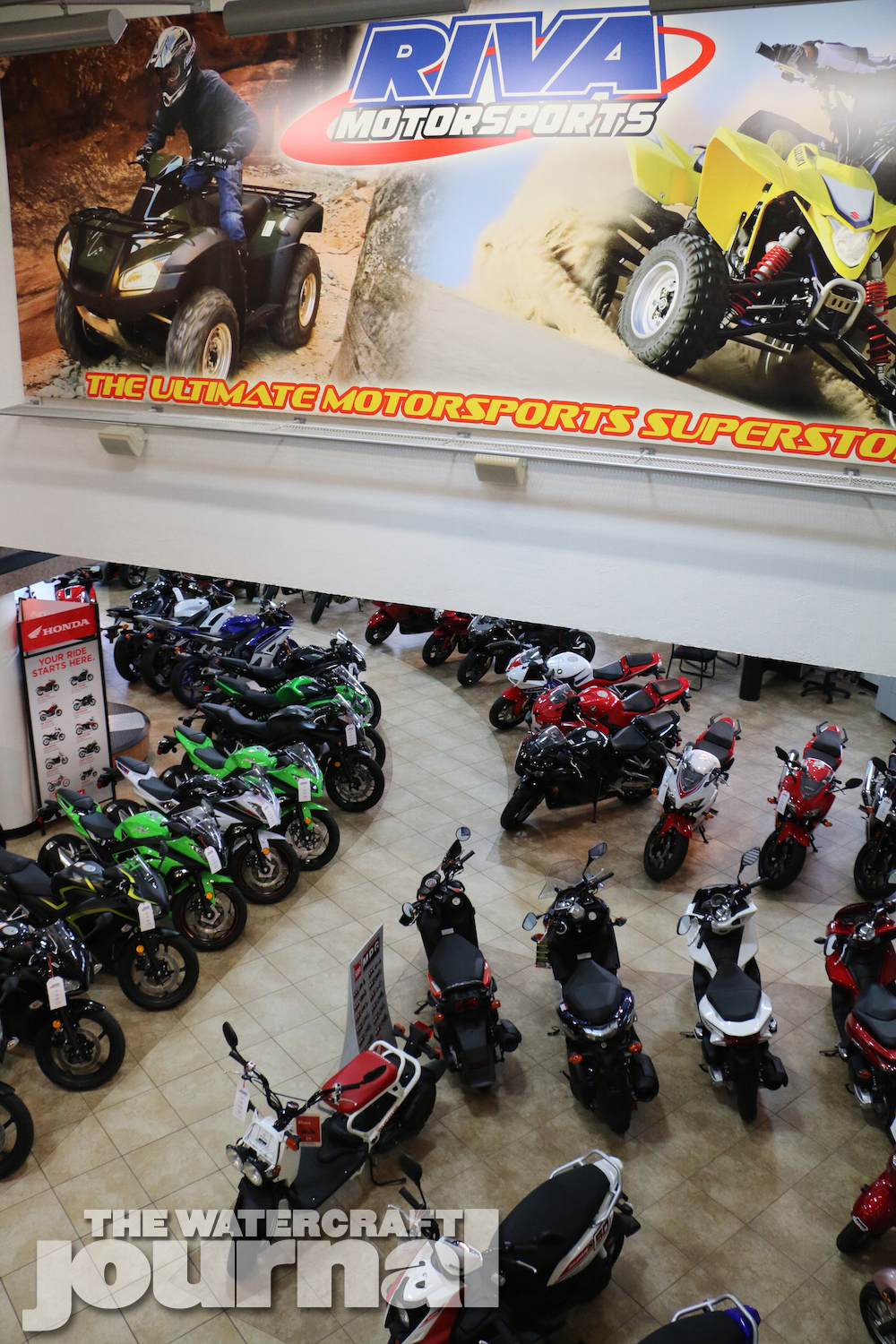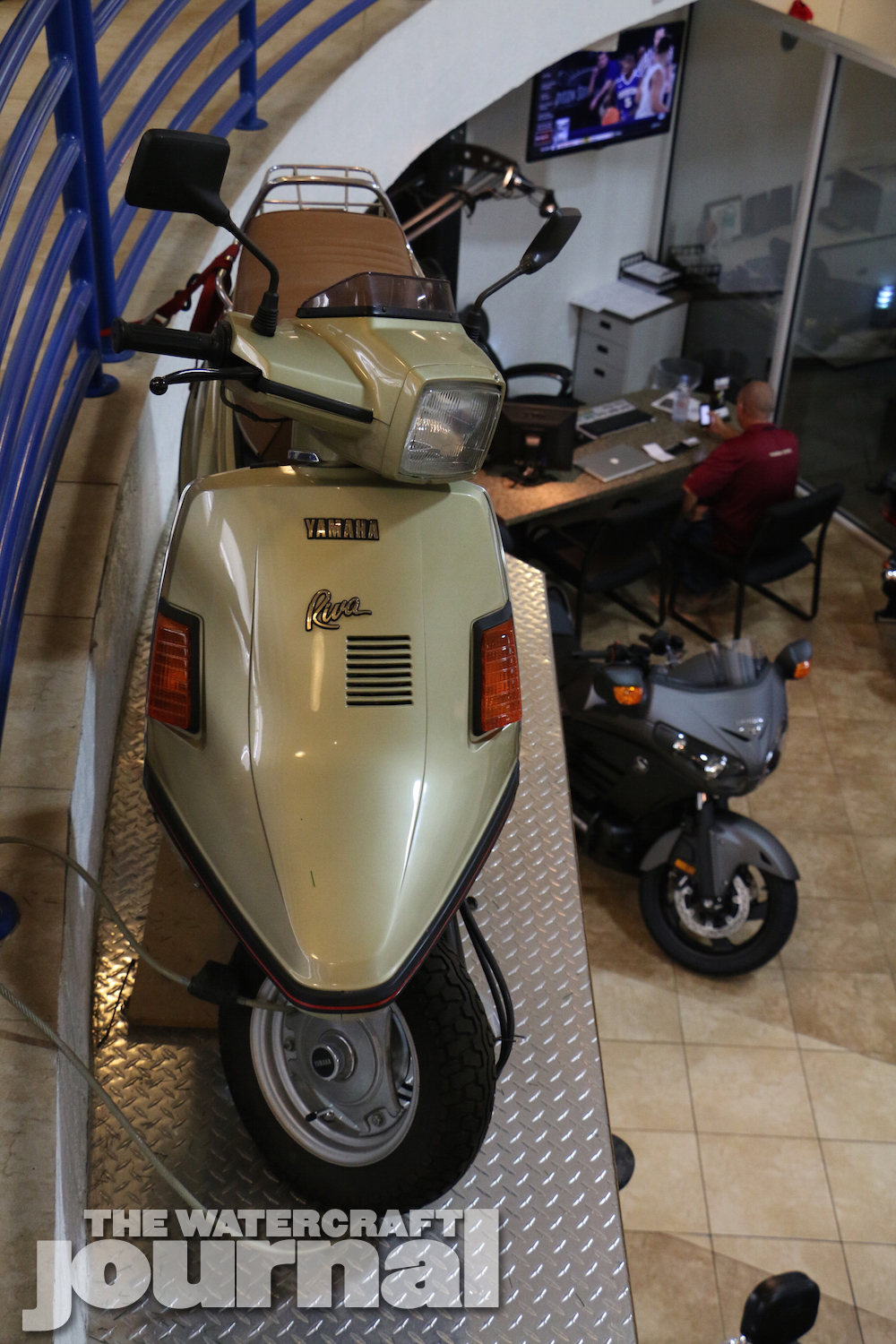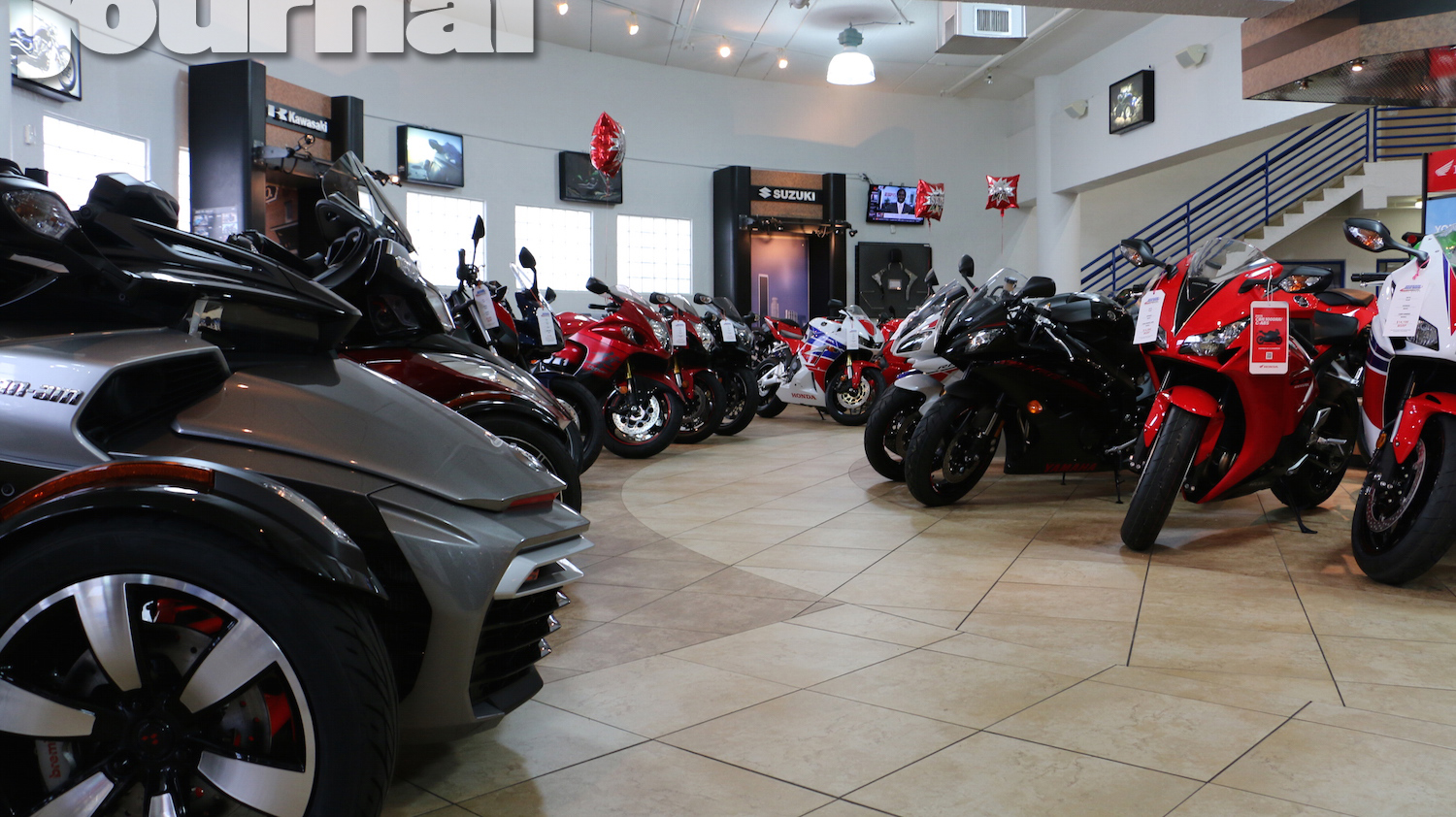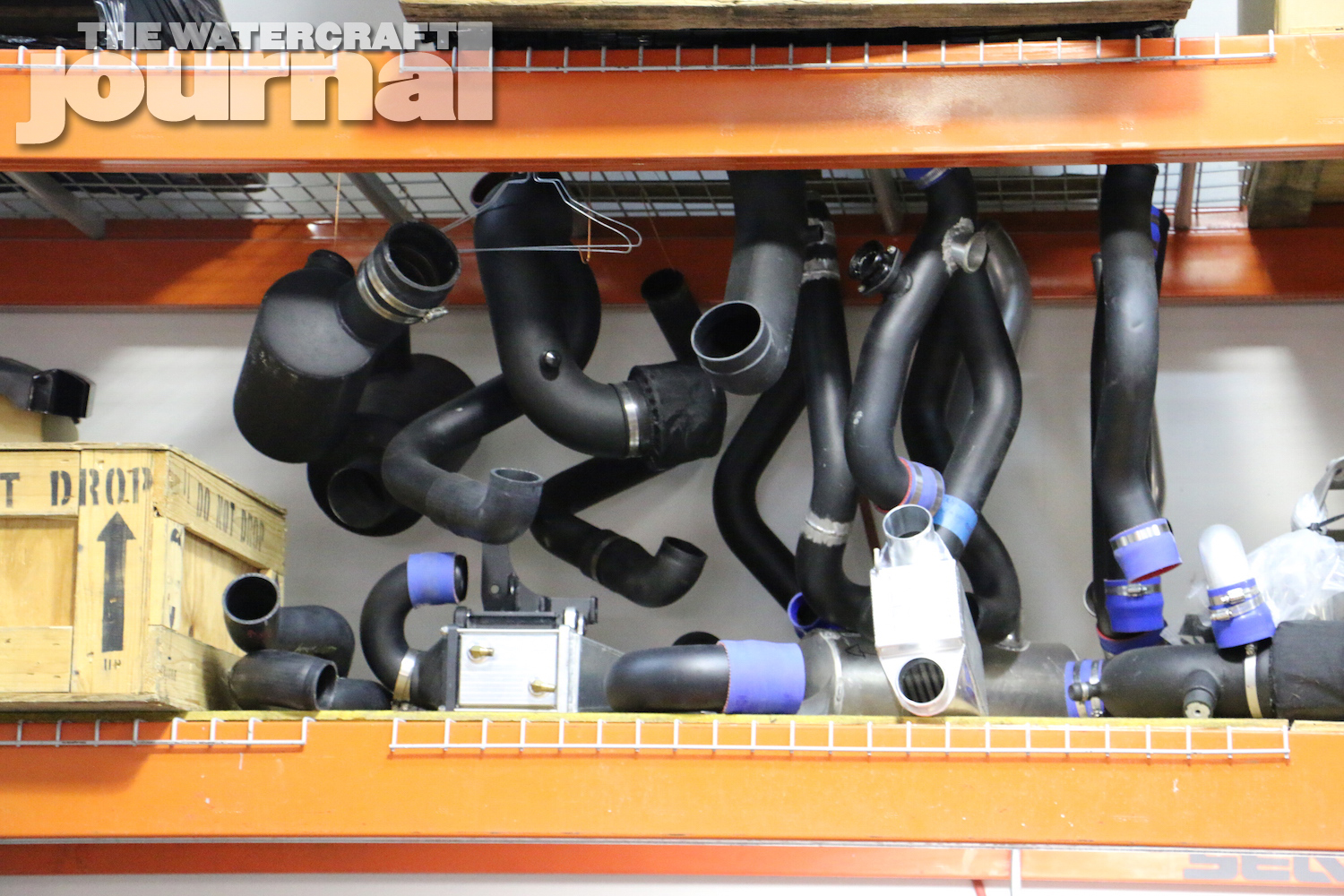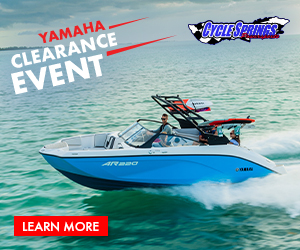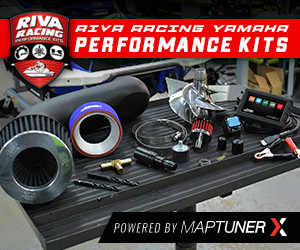Unlike so many others, there’s few places considered “holy” in our sport. NASCAR has Daytona. Indy has The Brickyard. Le Mans has Le Circuit de la Sarthe. Many would argue the rough-hewn, pebbly beaches of Lake Havasu City, Arizona would stand as sacred soil as well. But we contest that equal to the racers, the performance enthusiasts hold one spot higher than others, RIVA Racing. The racing branch of the successful RIVA Motorsports family of dealerships is woven within the Pompano Beach, FL, dealership.
So it was with great excitement when The Watercraft Journal was invited by RIVA Racing President, Dave Bamdas to spend a couple days, tour the facility, see the inner workings of the single largest manufacturer and supplier of performance aftermarket PWC parts in the world, and even test ride a couple skis exclusive to the company, including a prototype Stage III Yamaha FZR WaveRunner (which we published HERE).
Long before the glassed atrium was erected, or the polished tile floors were laid, RIVA started as a humble “mom and pop” motor scooter dealer and shop. In 1979, Steve and Lynn Bamdas opted to leave their New Jersey home with their then-teenage son Dave and three siblings and move to Pompano Beach, Florida to start a small motorsports business – then known as Lambretta South – selling mainly scooters, mopeds and go-karts. Only a few short years later, the Bamdases acquired the new Yamaha “Riva” scooter line, and promptly renamed the business to “Riva World.” This not only led to the naming of the company we know today but cementing its affiliation with Yamaha motorsports.
As Yamaha introduced their new watercraft – the WaveJammer and WaveRunner 500 – in 1987, so did Riva World expand it’s product line. As WaveRunner sales continued to grow, Riva World expanded as well, requiring a third change of the company’s name to the now widely recognized “Riva Yamaha.” Not only was Riva Yamaha now selling new WaveRunners, but a major dealer of OEM parts to racers and enthusiasts alike. Additionally, Riva had spearheaded an unprecedented championship race effort. The first team was led by Tim Judge, who fetched multiple titles – the evidence of Judge’s National and World number 1 plaques still hang proudly in Riva’s showroom today, beside other sponsored racers like Jeff Jacobs, Chris MacClugage, and Dustin Farthing.
The success of the team earned Riva the coveted position as the first-ever Yamaha Factory PWC Race Team. “Nobody had anything like it,” Bamdas explained. “Yamaha gave us one million dollars that first year. Not only did that cover the costs, the rig and trailer – but basically started our aftermarket product line and research and development efforts.”
With such a large budget, Riva’s race team swelled to include names like Dustin Motzouris, Tera Laho and Nicholas Rius in addition to those legends listed before. Success both on the water and in the showroom spurred further growth for Riva, adding Sea-Doo, Honda and Kawasaki products. Likewise, Riva’s OE parts sales swelled to include its own and other aftermarket parts, which sales are received, processed, fulfilled and shipped from the level above Pompano’s dealer floor.
Yet as Riva Yamaha grew into RIVA Motorsports, the PWC industry took an abrupt turn towards new 4-stroke technology. A couple blocks away from the pristine stucco walls, painted steel and glimmering glass of RIVA’s Pompano headquarters lies a nondescript industrial building with a hidden secret – it’s research and development facility. Staffed with some of the brightest minds in engine tuning, mechanical engineers and fabricators, the skunkworks building is rife with engines, hulls, and projects too secretive for us to disclose.
Beside a fabrication shop replete with a mill, lathe, various MIG and TIG welding stations, and the occasional woodworking bench littered with tools is RIVA’s jewel: a top of the line, atmospherically-controlled engine dynamometer. The computer-operated dyno provides limitless amounts of data, internal and external engine temperatures, knock readings, oil and water pressures and temps, and of course, coveted horsepower and torque numbers.
Each and every manufacturer’s engine is tested here for a baseline. Equally, as is every competitor’s aftermarket part. If you claim your doodad will up a Sea-Doo’s boost, RIVA knows if you’re lying or not. “The dyno was necessary with the introduction of the 4-stroke to watercraft,” Bamdas explained. “The technology going into these engines far surpassed that of the old 2-strokes and we needed to be on top, and really make sure that what we were selling not only did what it said it did, but didn’t hurt these sensitive engines.”
“That’s why we’re so proud of our new Vi-Pec ECU series,” he beamed. “We’ve poured hundreds…thousands of hours into getting these tunes right. From bone stock, to just a few parts to full-on race mode, we’ve got tunes and the capabilities to modify a tune for our customers. Our guys have gone back-and-forth (between the R&D facility and RIVA’s test lake nearby) countless times – and still do. We’re dedicated to providing the highest quality ECU engine management system out there.”
And, as it were, the job never ends. “We pretty much know what’s coming out 5-to-6 months in advance. The manufacturers want us in on their new products so that we can be ready with performance parts when they announce their new units,” Bamdas hinted. “We’ll have products in time for both Yamaha and Sea-Doo’s dealer meetings this fall.”
Today, RIVA’s racer support program is altered from its heydays in the 1990s. Racers like Aero Aswar and Aqsa Aswar, Erminio Iantosca, Troy Snyder, Rob Greenwald and Brian Baldwin wave the RIVA banner. A sprawling open booth is always found at every year’s IJSBA World Finals, and RIVA has taken a vested interest in the growth of the HydroDrag series. For the dealerships, RIVA Motorsports recently picked up Gibbs Quadski and quickly became the highest volume dealer for the brand in the nation. And to think all of this sprouted from a weathered South Florida scooter shop.





